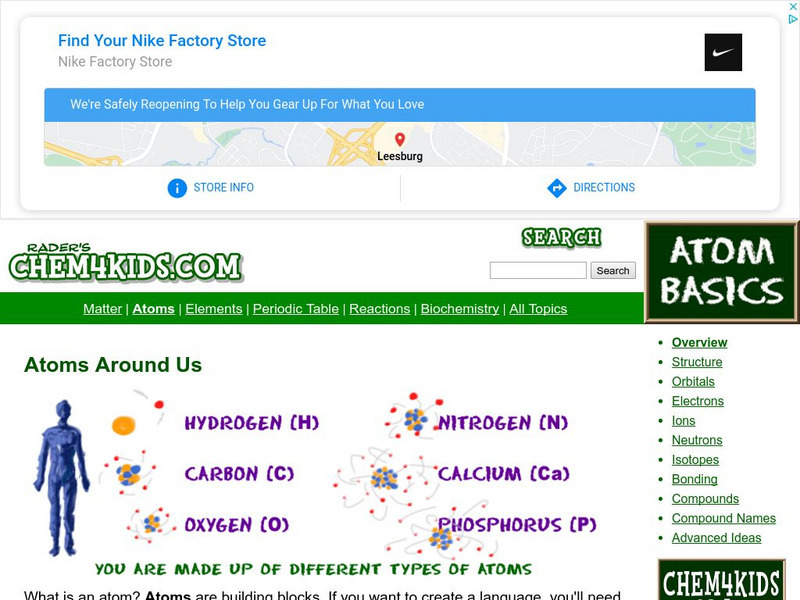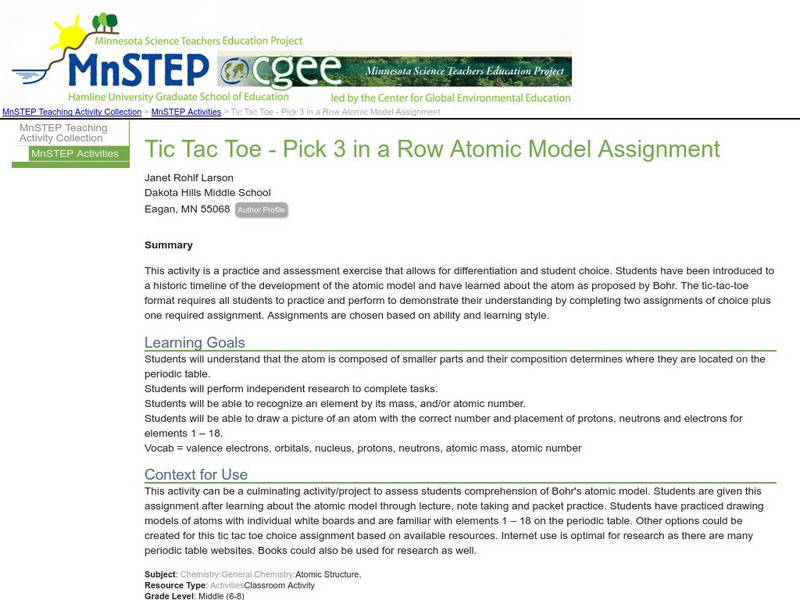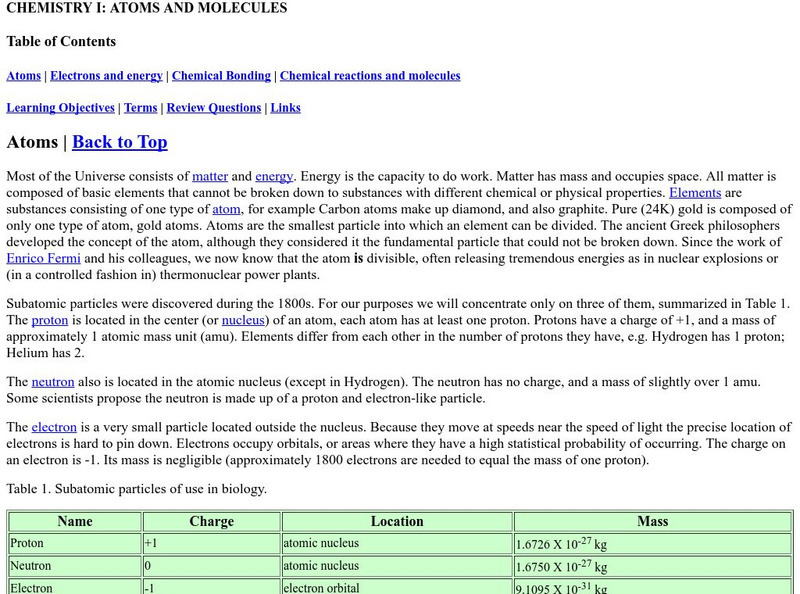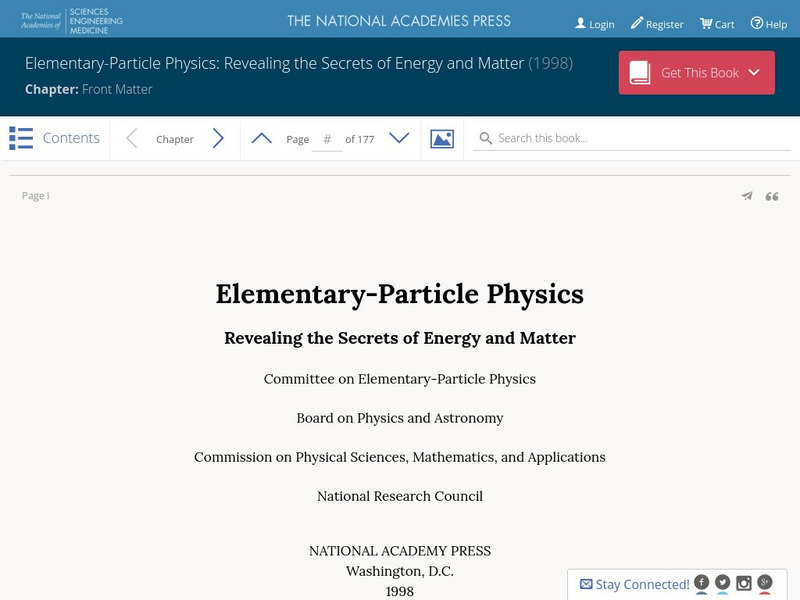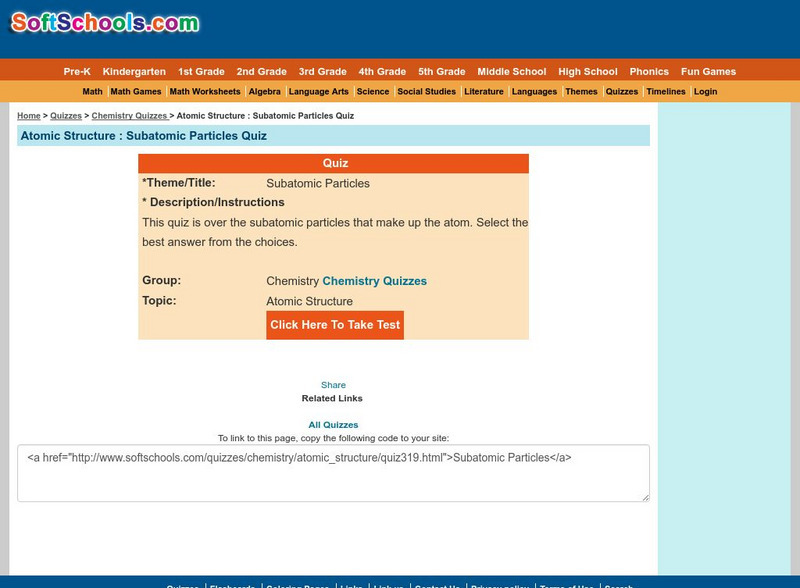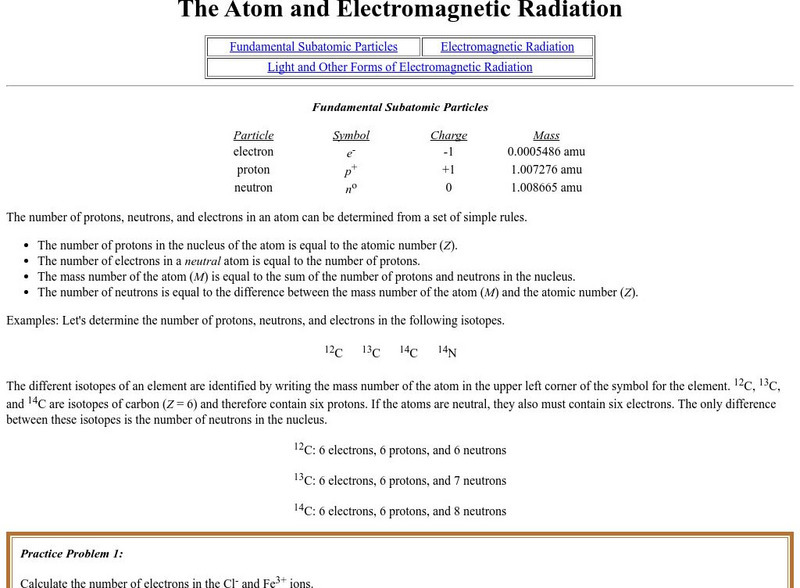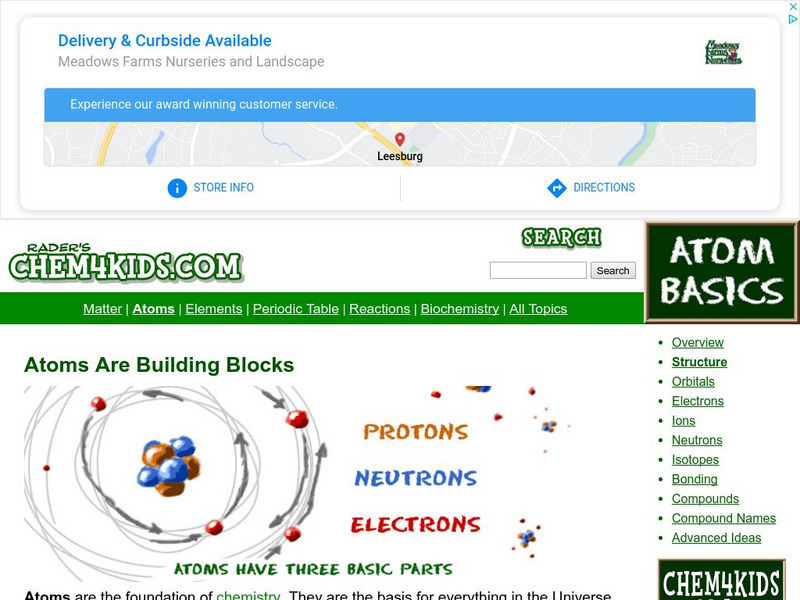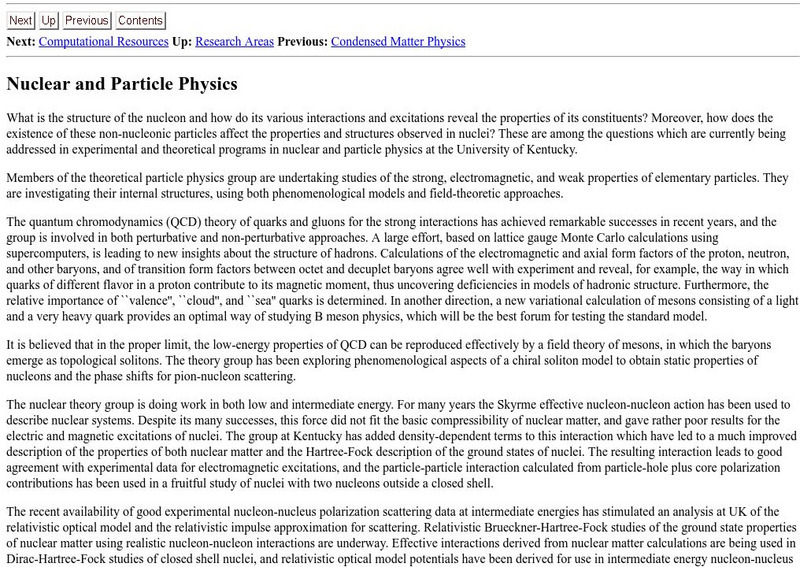American Chemical Society
American Chemical Society: Hompage
ChemCenter, available from the American Chemical Society, provides chemistry news, reference sources and other public services.
Environmental Chemistry
Environmental chemistry.com: Anatomy of an Atom
Explains the basics of atomic structure, from simple definitions to information about quantum theory. Accurate and helpful basics whether or not you need the more advanced information.
Chem4kids
Chem4 Kids: Atoms
This site provides a detailed overview of atoms. Content explores an atom's structure, as well as what ions are, how atoms bond, what compounds are (including how to name compounds), and what isotopes are.
NASA
Nasa: Atoms and Molecules in Motion, States of Matter [Pdf]
Everythingin the universeis either matter or energy. All matter is made of combinations of about one hundred basic building blocks, the chemical elements on the periodic table. Going a step further and breaking these elements down to...
Department of Defense
Do Dea: Chemistry Review
Review atoms with this slideshow. You can choose to listen to the review or read the accompanying text. At the end, play the game to review the basics of atoms that you have just learned about. You may play the game as many times as...
American Chemical Society
Middle School Chemistry: Chapter 4: The Periodic Table and Bonding
Six middle school chemistry lessons about the periodic table and bonding complete with handouts and animations.
PBS
Pbs Learning Media: The Atom
In this interactive activity from ChemThink, students will take a closer look at atomic structure, properties, and behaviors. Includes background reading material and discussion questions.
TED Talks
Ted: Ted Ed: Radioactivity: Expect the Unexpected
Video explaining the process, risks, and benefits of radioactivity. [4:16] Followed by a short quiz and a list of additional resources to explore.
PBS
Pbs Learning Media: Atomic Structure
Take a look at the parts of an atom and learn about its properties.
Wikimedia
Wikipedia: Materia
Explore the concept of matter in this Spanish-language encyclopedia entry. This site features the properties of matter, the Law of Conservation of Matter, and other important features of matter.
Science Education Resource Center at Carleton College
Serc: Tic Tac Toe Pick 3 in a Row Atomic Model Assignment
A choice menu assignment where young scholars select between several extension activities that help understand the structure of the atom.
Science Education Resource Center at Carleton College
Serc: Drawing Atoms
This activity serves as an introduction to chemistry, and can be used to help young scholars draw a two dimensional image of the atom.
Estrella Mountain Community College
Online Biology Book: Chemistry I: Atoms and Molecules
In this online biology textbook, learn about atoms and molecules as they relate to life. Find out about topics such as electrons and energy, chemical bonding, and chemical reactions.
Other
University of Kansas: Quarked!: Baryon Blaster
Try to fill each SUV with the right kinds of quarks as it travels across the screen, in order to make different types of baryon particles. The game becomes more challenging as you progress through the levels.
Sophia Learning
Sophia: Subatomic Particles: Lesson 2
Describe the $ifference between the subatomic particles, including their masses, locations, and charges. This lesson is 2 of 7 in the series titled "Subatomic Particles."
Other
National Research Council: Elementary Particle Physics
The Committee on Elementary-Particle Physics, part of the U.S. National Research Council, presents this massive report on particle physics. It's a definitive document. Surprisingly readable, totally detailed. Start with the Table of...
CK-12 Foundation
Ck 12: Chemistry: Atomic Nucleus
[Free Registration/Login may be required to access all resource tools.] Describes the modern concept of the atomic nucleus.
Soft Schools
Soft Schools: Subatomic Particles Quiz
Take this interactive, multiple-choice quiz over subatomic particles, then review your score and any missed questions at the end.
Atomic Archive
Atomic Archive: Nuclear Fusion
From the Atomic Archive - the online companion to the award-winning CD-ROM. This page defines nuclear fusion and depicts the process by an informative diagram. Includes numerical values which describe the typical energy values for fusion...
Purdue University
Purdue University: Fundamental Subatomic Particles
At this site from the Purdue University, the elementary subatomic particles are described and electromagnetic radiation is detailed. Includes learning exercises and answers.
Science Struck
Science Struck: How Does Radioactive Decay Work?
Explains the processes of radioactive decay in primary and secondary modes.
Chem4kids
Chem4 Kids: Atoms Are Building Blocks
Identify the basic structure of atoms, the building blocks for all matter.
Other
American Institute Physics: Quark Stars
Collapsed stars, between white dwarfs and black holes, can be studied as quark-gluon masses, or quark-hyperon groups. Extreme pressures lead to extreme states.
University of Kentucky
Univ Ky Dept of Physics: Nuclear and Particle Physics
Univ of Kentucky research projects address "What is the structure of the nucleon and how do its various interactions and excitations reveal the properties of its constituents?". QCD, the four forces, and nucleon-nucleon interactions are...
Other popular searches
- Protons Neutrons Electrons
- Protons, Neutrons, Electrons
- Electrons, Neutrons, Protons
- Electrons, Protons, Neutrons
- Protons Neutrons, Electrons
- Atoms Neutrons Protons
- Protons Neutrons and Electrons
- Protons , Neutrons, Electrons




